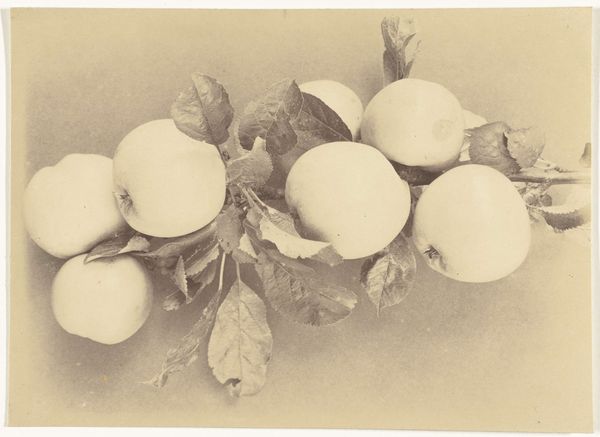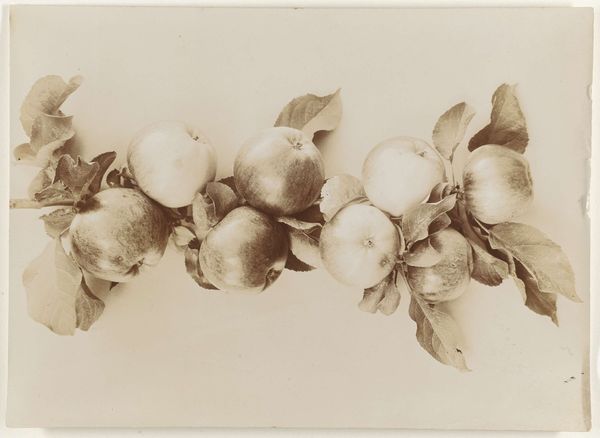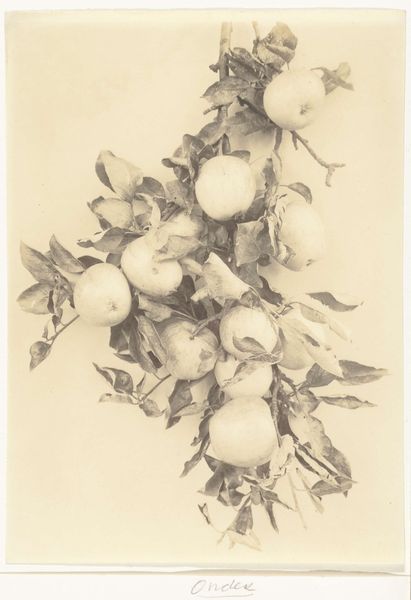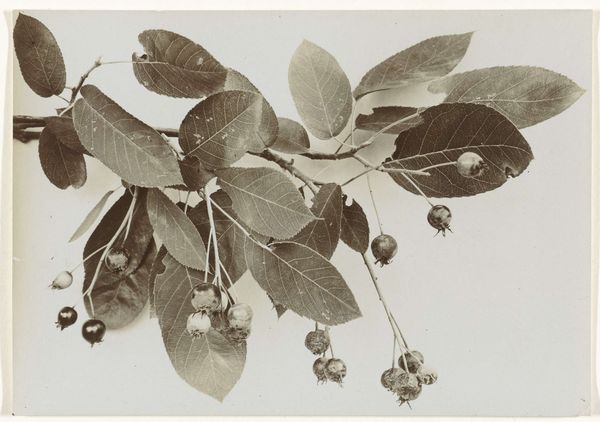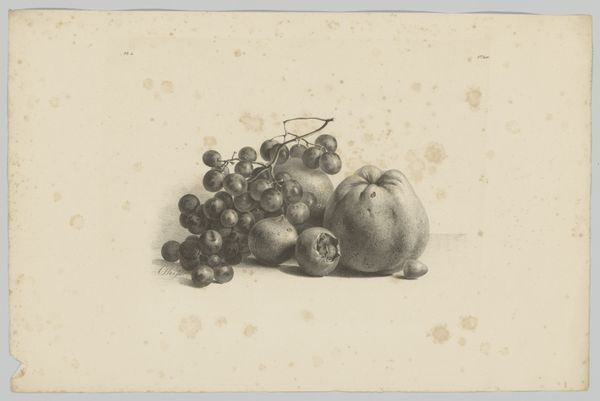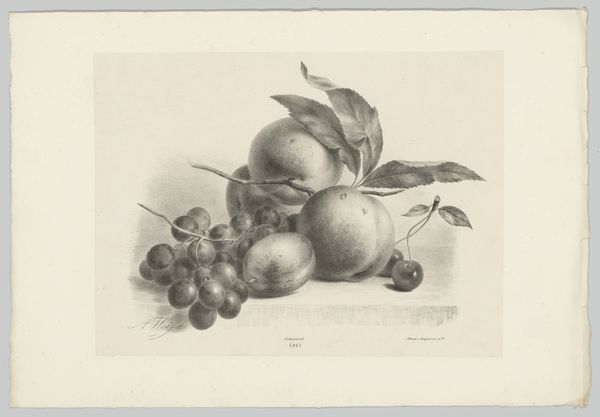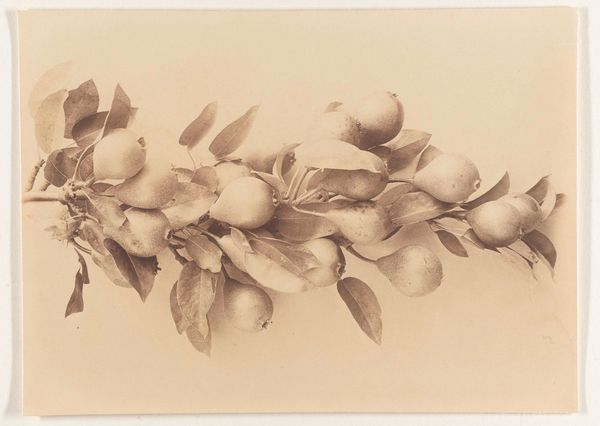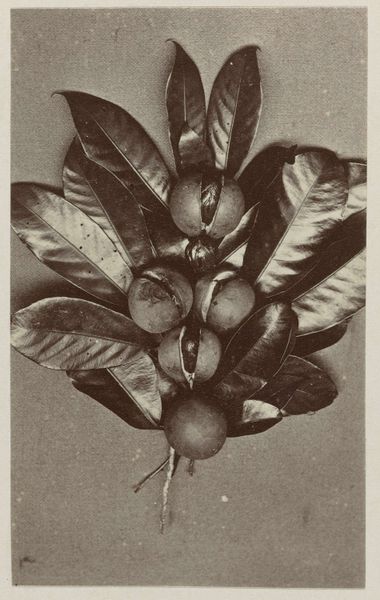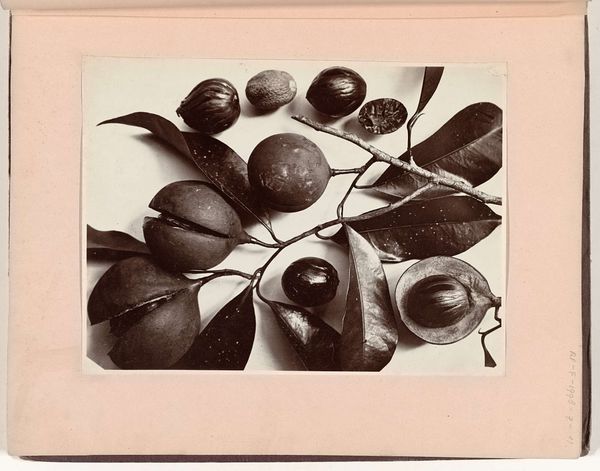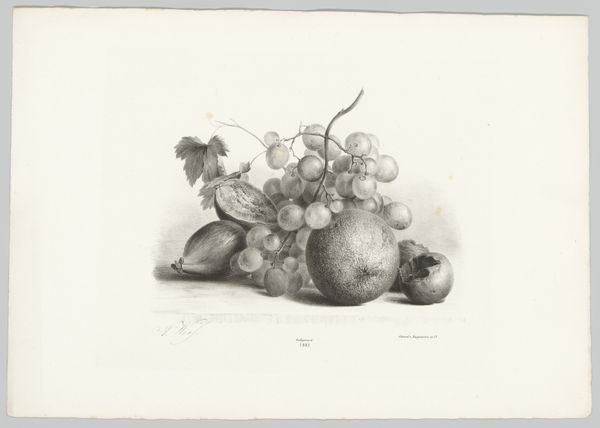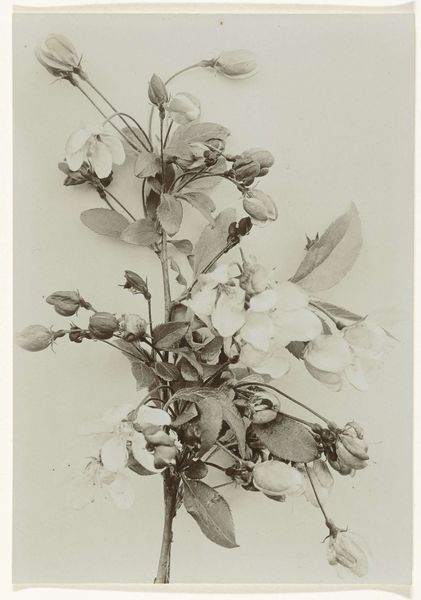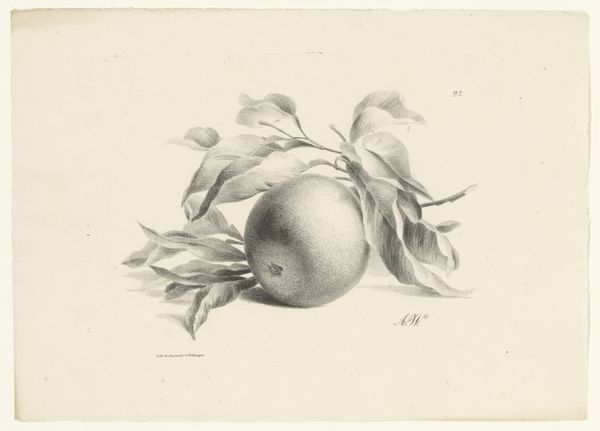
photography
#
still-life-photography
#
botanical illustration
#
photography
#
botanical drawing
#
botanical art
#
watercolor
Dimensions: height 121 mm, width 166 mm
Copyright: Rijks Museum: Open Domain
Editor: So this is "Plant Study of a Cherry Branch," a photograph by Richard Tepe, created sometime between 1900 and 1930. The muted tones and almost scientific composition give it a sense of calm, but also distance. How do you interpret this work in the context of its time? Curator: It’s tempting to see this photograph simply as a botanical study, but I think considering its social context adds another layer of meaning. During the late 19th and early 20th centuries, photography was vying for recognition as a legitimate art form. Botanical studies were very popular. Editor: So, in a way, the choice of subject matter was a strategic one? Curator: Precisely! Tepe was operating within specific artistic conventions and societal expectations. Consider the rise of amateur photography clubs at the time. What role did scientific societies or photographic clubs play in shaping Tepe's aesthetic and promoting photography as art? It is important to look at the institutions which enabled this photo to be produced and preserved. Editor: That makes me think about how museums displayed works like this back then versus now. Did they see these as art, science, or something in between? Curator: Exactly. Think about how images circulated – in journals, exhibitions, or personal albums. It forces us to acknowledge that our understanding of "art" is not timeless but rather shaped by specific cultural and institutional frameworks. Editor: That is something to chew on, the ever shifting perspective on what becomes art or not! Curator: Precisely, it also reminds us that art does not happen in a vacuum.
Comments
No comments
Be the first to comment and join the conversation on the ultimate creative platform.
